My vote is for Kurt Russell, the original Snake.
BitterAlmond's forum posts
@awesomeusername said:
Do you consider Russia the Middle East? Because I thought you fought Russians in CoD games.
I'll be playing this game when (if) it comes to Vita. Hopefully Sony and the developers deal comes through and the port is made.
Full disclosure: My CoD experience is spotty at best. I played through the original MW's campaign fully, and bits and pieces of other games. Though you're right: you are fighting Russians, I remember a huge part of the game taking place in the Middle East. Though it does jump all over the globe. I just used CoD as an example, though: you can't deny that we have a lot of "anti-terror" games these days set in the Middle East.
Rarely, but in a few cases it makes a lot of sense.
Case in point: Team Fortress 2. The game sees a huge boost in framerate (often 30+ frames) with an extra 200-300MHz in the 2.2-2.6GHz range. Don't ask me why, that's just how the game works. A lot of people with processors around 2.2-2.4GHz are overclocking to play the game much more stably.
That said, most games aren't like this. The Source engine is very processor-dependent. Many others aren't.
I'm sorry this one's taken so long. Between picking up more work and school kicking into high gear, I really haven't had the time. Because it's now been more than a month since the launch of the game, I figure most of you have already finished and seen the "true ending" so I'll just be talking about it as if you already know instead of explaining as I go like in the last couple parts.
Facelessness encourages the player to project himself onto the character
One of the things that works really well in Hotline Miami is how quickly you (the player) slip into "being" the character. I mentioned this in Part 2 a little, noting that silent protagonists always encourage player projection. As soon as a character opens his mouth, he becomes his own character. Mass Effect did this with Shepard. Though the player had a huge amount of choice of how Shepard would react, his words were his own. This essentially puts Nolan North between the player and his/her character.
Yet another example of how the late-80s art style works, the fact that you never see your own face thanks to the top-down point-of-view also encourages this player projection.
Although the protagonist certainly seems to have his own vibe, the player is left to interpret his actions and rationalize them in a way that makes sense to him. Why does he rescue the girl? Why does he live in such a grungy apartment? What did he do for a living before he killed people? All these things are up to you, and you're very likely to play them close to the heart, even if only out of habit.
This is interesting in itself, but nothing new. What is new is how this applies to the violence of the game. It seems you leave a bloody trail wherever you walk, and until you get used to that, it is a little unnerving. That squeamish feeling is brought on by this projection of the self onto the character. The slimmer that disconnect, the easier it is to feel how the character feels.
Drugs are all around but nobody's using them
Miami in the late 80s was a blow-fuelled gangland, and it's no coincidence this game happens to take place exactly then. Throughout the game, you see a lot of needles and mysterious white powders, but you never actually see any characters using them actively. This may just be because of the minimalist storytelling style, but it also elegantly implies something else: that everyone is using them.
The breakneck pace of the game backs this up, as well as the AI. The game tells you "Tip: Enemies are predictable" in the loading screen. Alex's review mentions this: though the AI is simple, the speed of the game gives it a very humanly dynamic feel. What this all amounts to is the semblance of a bunch of heavily-armed men all acting entirely on visceral instinct. The flashing background and constantly-rotating screen tell you one thing: you're probably the most coked-up of everyone.
By doing it this way, Dennaton has simultaneously kept the focus off the drugs, and pulled no punches by hiding them in plain sight.
Nationalists
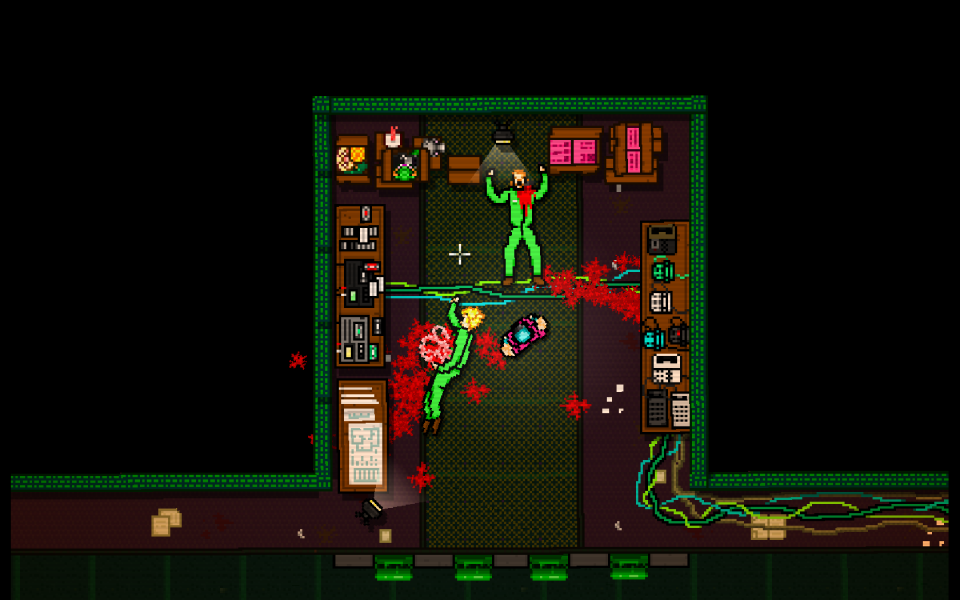
Early on in the game, you're told you're fighting the Russian Mafia. The classic boogeyman of the 80s makes perfect sense for this game. When the ending reveals that the people behind the phone calls are trying to affect how the country goes by killing of foreigners, it's hardly a surprise.
When you take a step back from the game though, you see some political commentary: the boogeyman has changed, but the attitude hasn't. Shooting Russians in the 80s was the status quo for most action films from the West, from James Bond to Bruce Willis. Take a look at what we're shooting in modern action films and games: Arabs. Recent Call of Duty games have mostly been set in the Middle East, as have more thoughtful (though not necessarily any less violent) games like Spec Ops: The Line.
It's important to remember that this game was made in Sweden, not in the States. Meta-analysis always has a different flavour than analysis coming from somewhere else, and Hotline really hits the nail on the head for having been developed outside the continent.
One neat loose end left in the game is the implication that you haven't stopped the movement, even if you killed the two people behind the calls. When you're abducted to the dirty apartment, there are three people in masks talking to you. Though you kill two people at the underground phone centre, there's still a third one out there somewhere. And that's assuming those two were two of the masked abductors: there could be even more of them.
Games as art
I wrote to Jonatan, one of the two guys behind the game, and he told me "Joining a studio sounds like it would mean giving up some of my creative freedom, which I don't want to do." If you've played any of his earlier games (he's also well known as "Cactus" or "Cactusquid" and has been making small games, quietly releasing them for years, and has built a small but loyal following) you'll know some of them can be quite abstract. Hotline Miami is first a piece of art and a game second. Every piece is integral to every other piece, and it all fits together so nicely it's hard to imagine it any other way.
Note: this article's a bit of a pictorial in order to give people who haven't played the game a good idea of what is going on, as well as to make sure everyone who has played didn't miss any of the clues I'm talking about. Part 3 will be more text and fewer pictures, I promise. The main body of text can be found at the bottom, under all the pictures. Also NB that this article is chock-full of spoilers.
Well, I did it. I finished the game, got most of the masks, and saw the extra content on YouTube (I'd rather replay without having to hunt down little tokens). She's a doozy alright, but let me catch you up on the first half of the ending: the psychological thriller and twist.
You're slowly going crazy
As I said in Part 1, the game is unforgivingly violent and it takes some getting used to. Especially since at first you're not sure who it is you're killing. After you clear one building, the phone on the 3rd floor starts ringing and you pick it up.
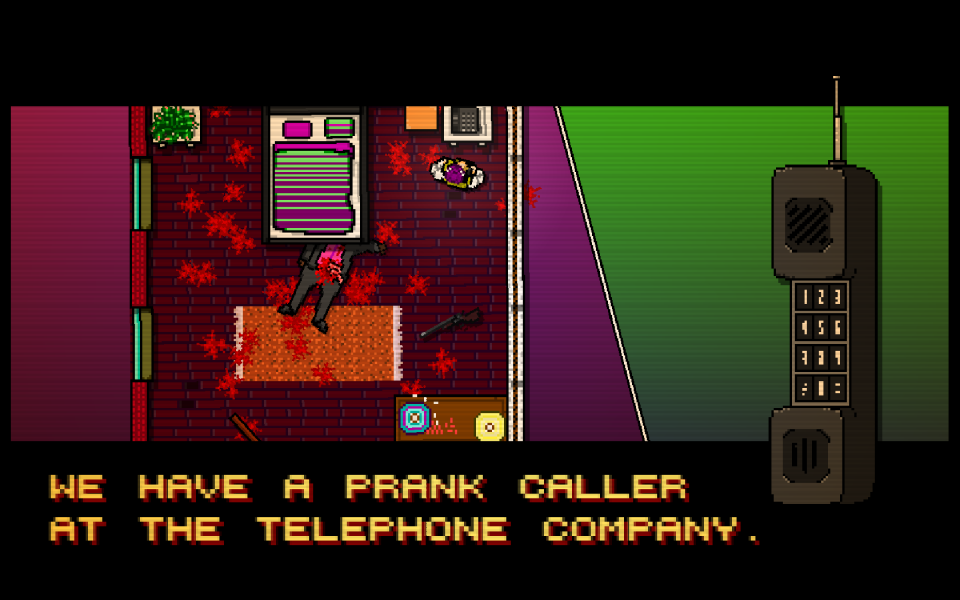
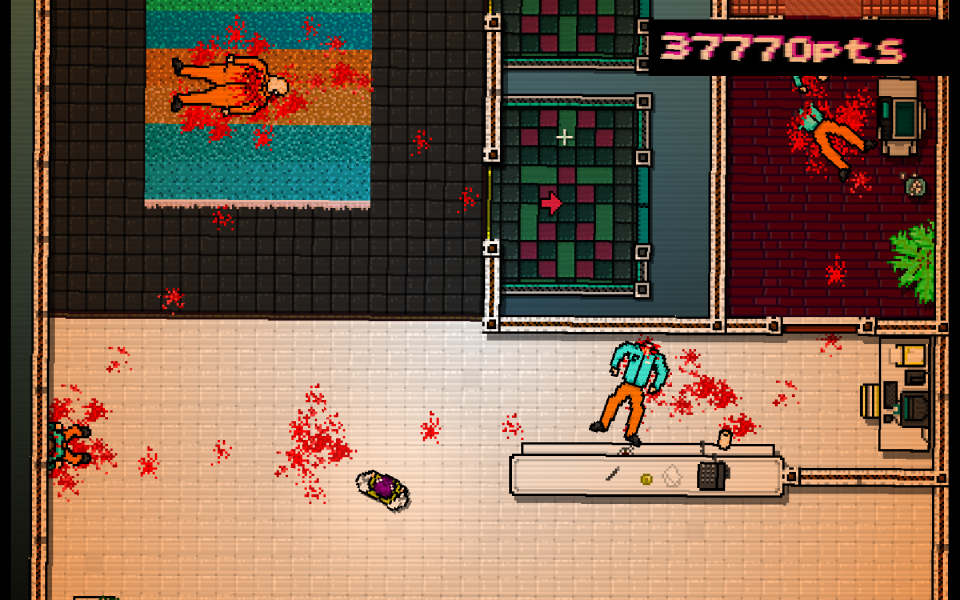
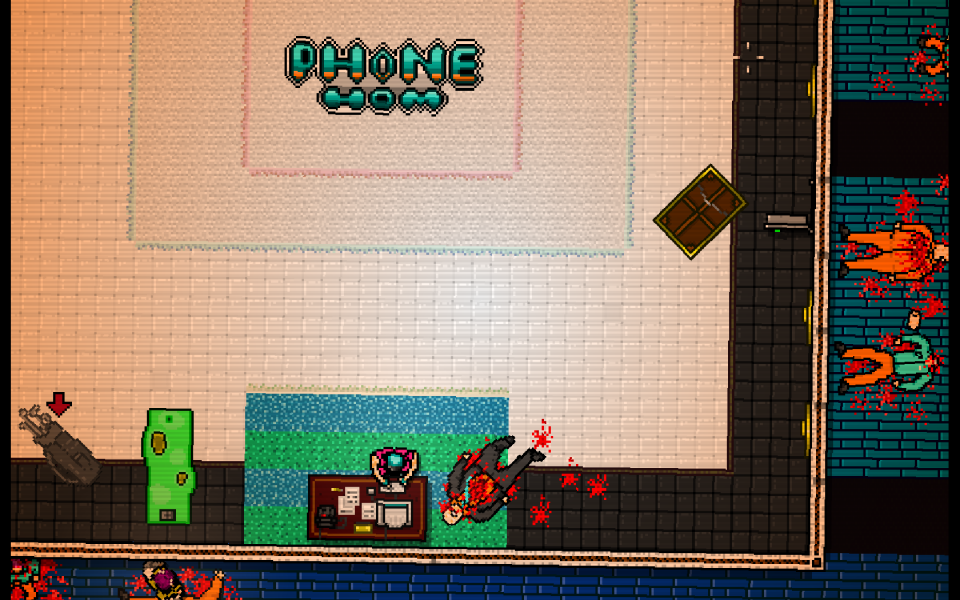
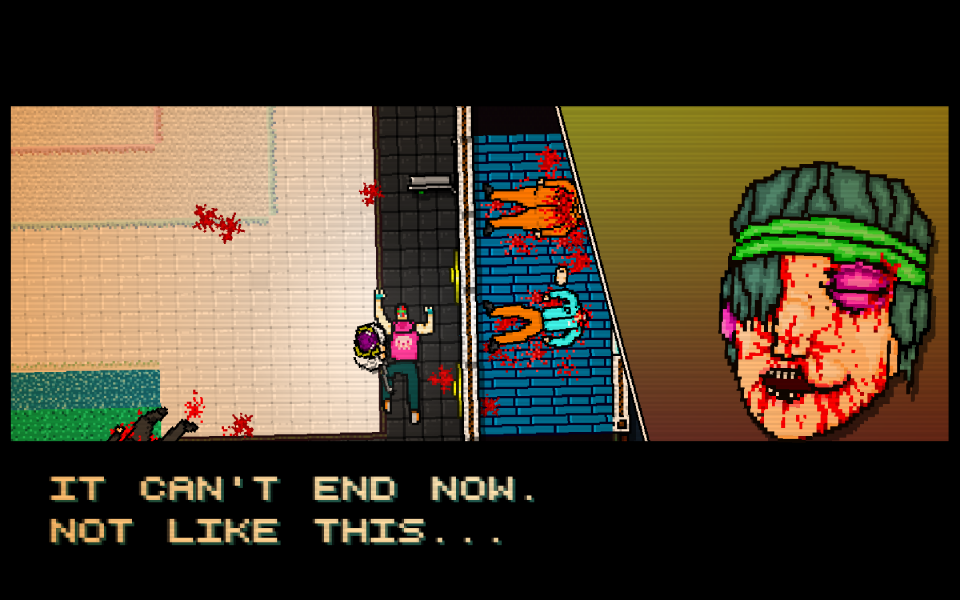
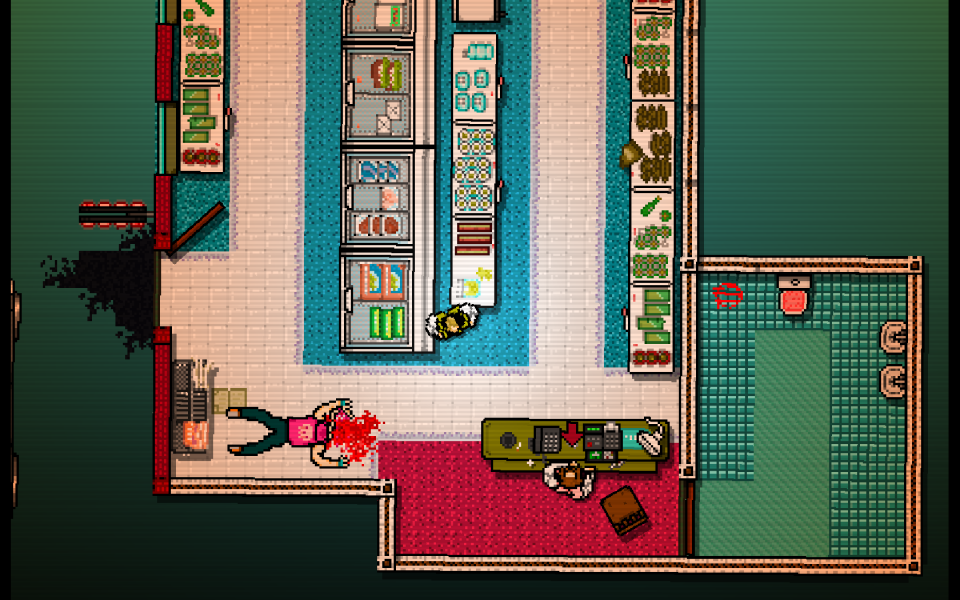
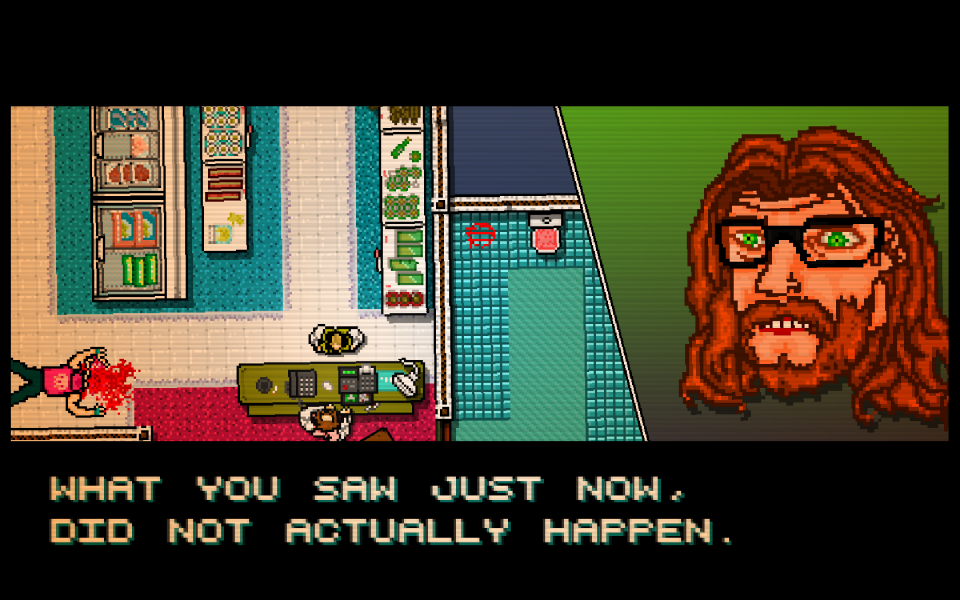
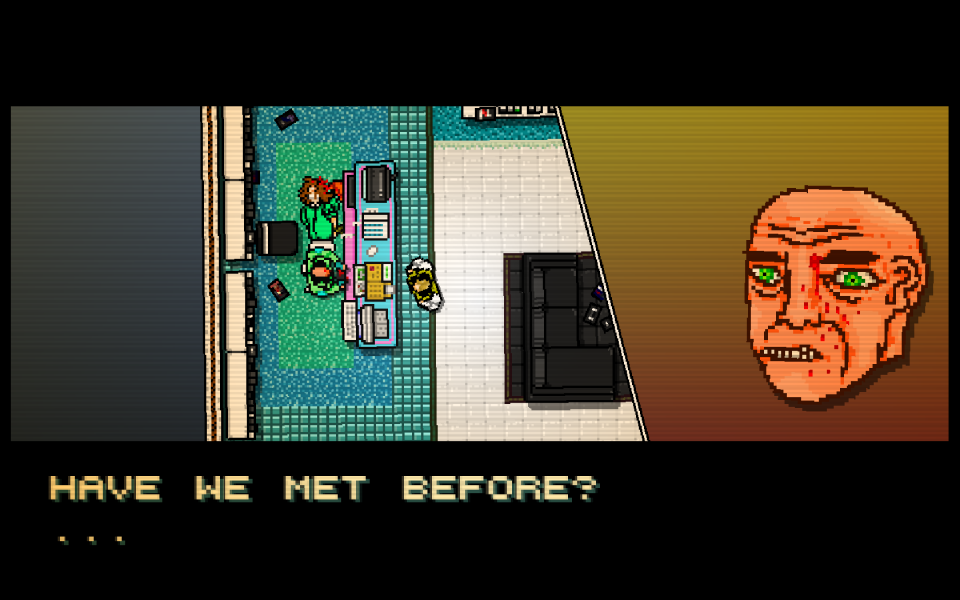
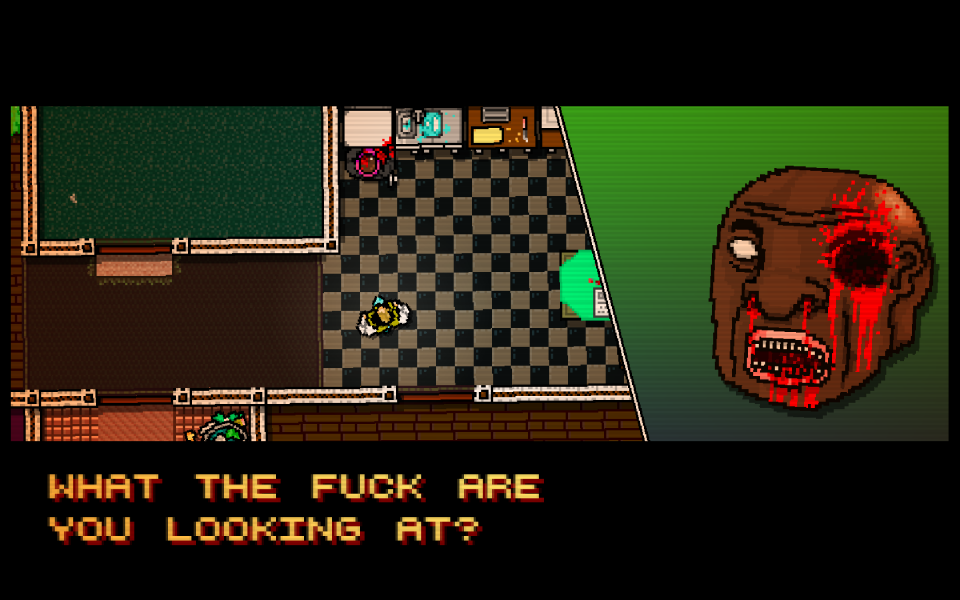
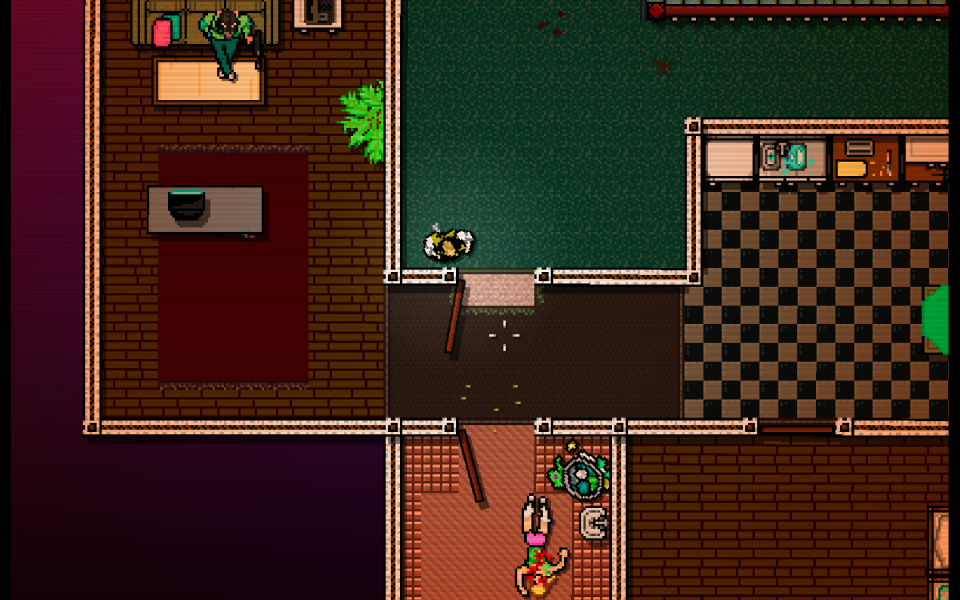
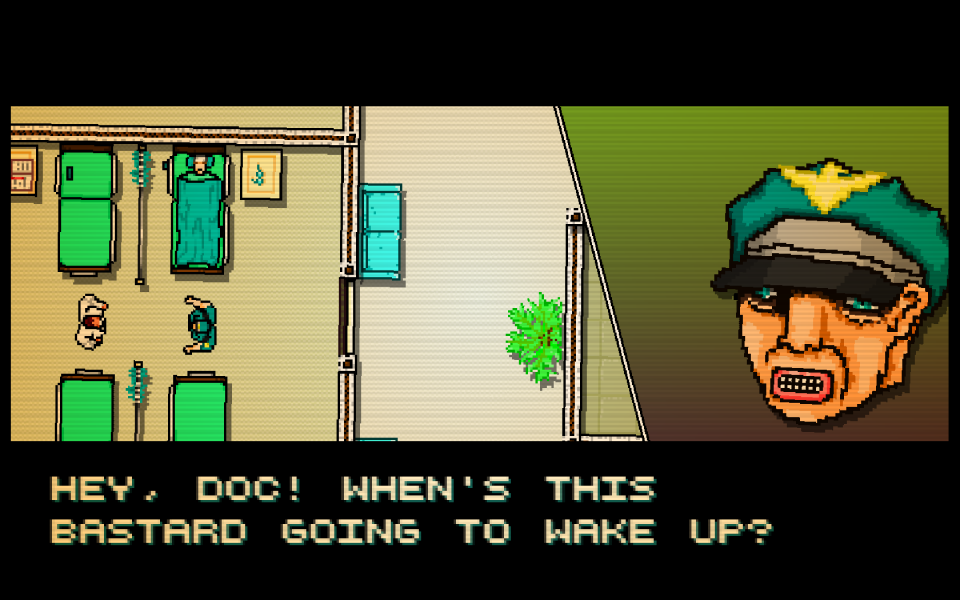
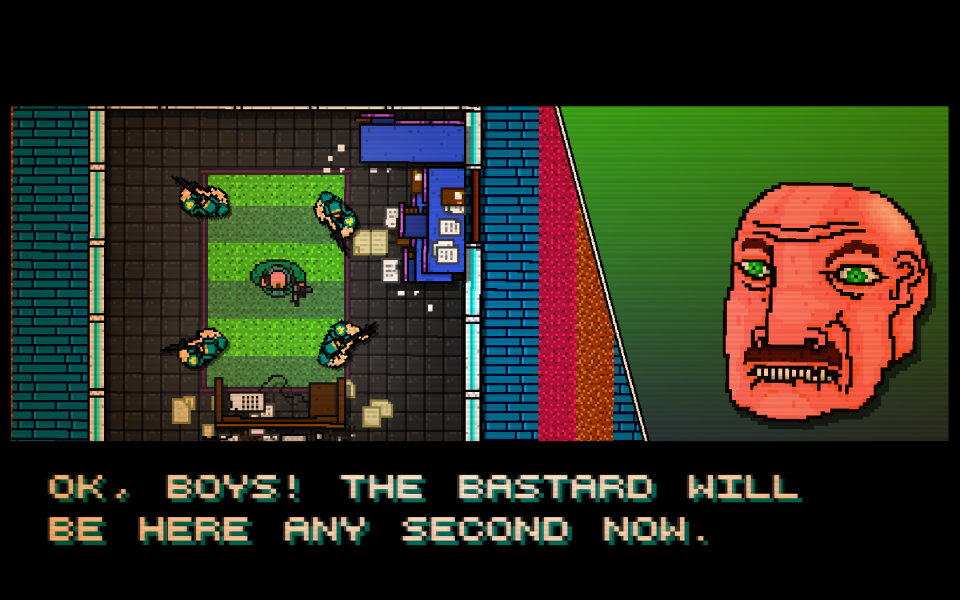
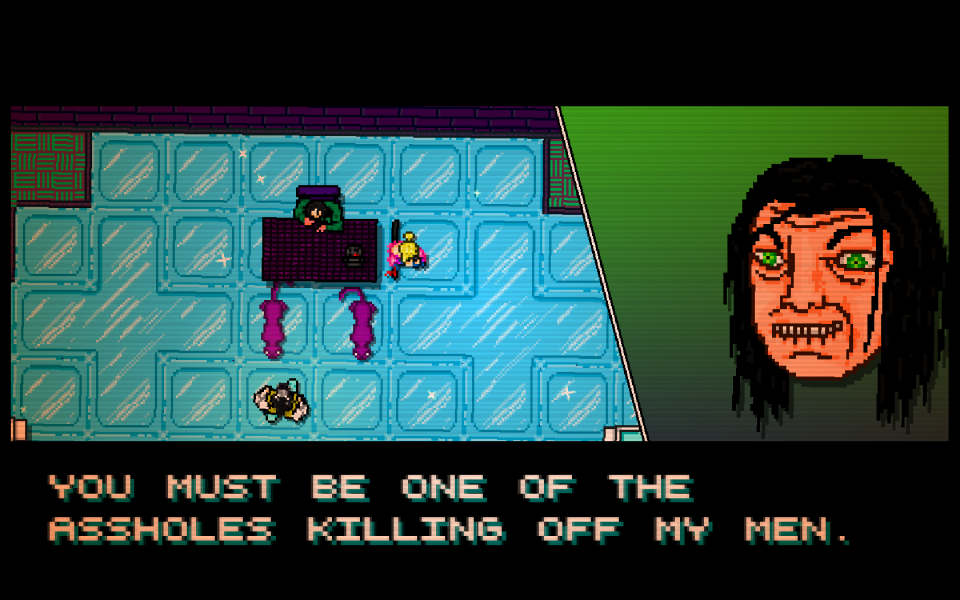
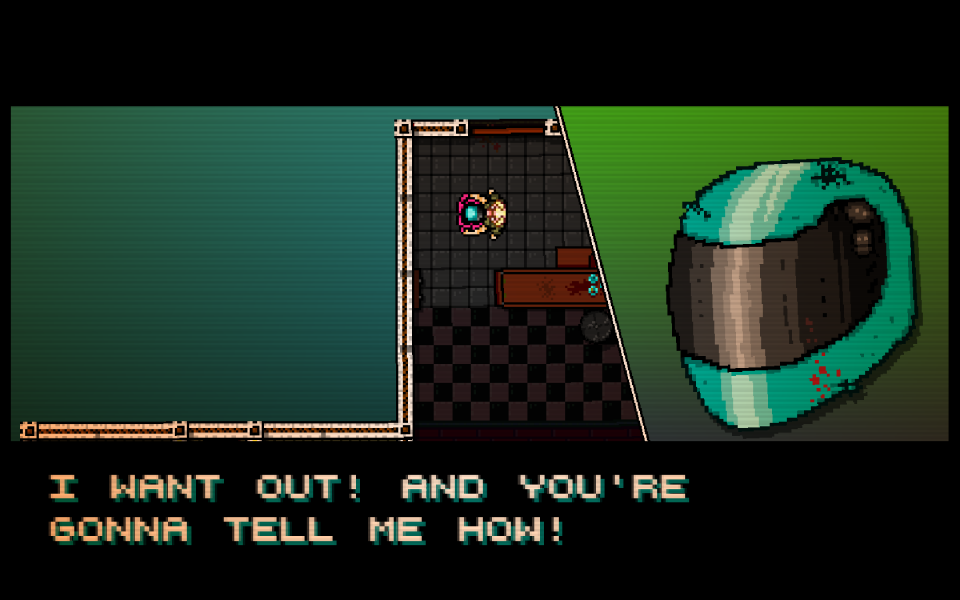
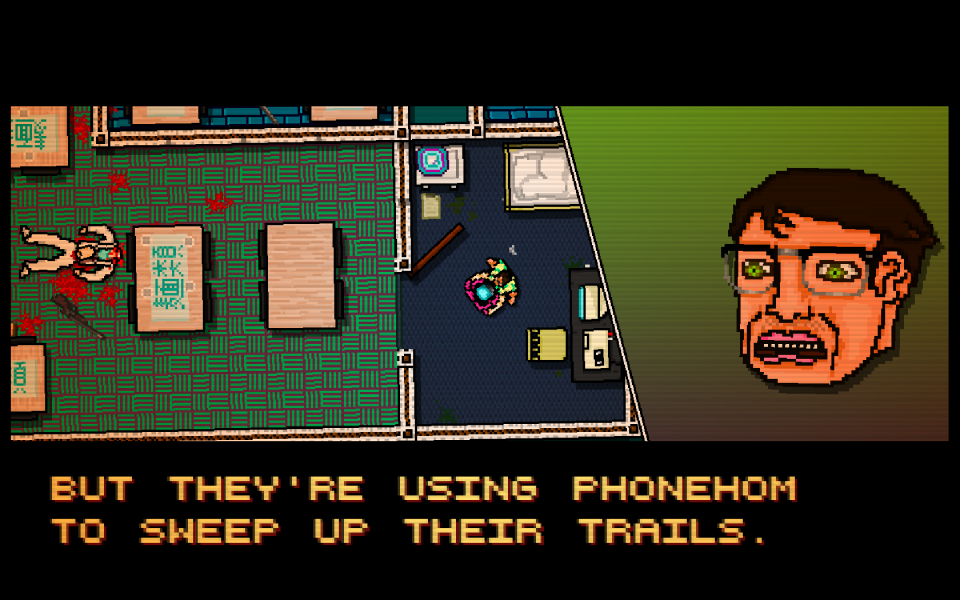
That's enough to digest for now. I've skipped a few steps in the story, but you've now got all the main beats up to near the end. I'll leave the very end to Part 3, but let's take a look at all that happened here. There's something quite interesting going on in how the gameplay evolves to perfectly match the tone of the story.
First off, your worst fears come true when your character starts going more and more insane. As you unlock more weapons and masks, your kills also get faster and more brutal. By the time you make your assault on the police station, you've probably unlocked some of the better masks, giving you superhuman powers to kill with any thrown object, or move even faster than normal. Using these powers you're an unstoppable force, and as one that doesn't speak the player is left guessing how much sanity there is left. This is very effective in preserving the dark tone in the later levels as the game becomes more outlandish, as well as keeping it edgy and uncomfortable as the player gets used to all the violence in the game.
Nobody knows you
A crucial turning point comes when the shopkeepers stop all being that one same "friend" of yours. Until this point, the quiet visits to collect your payment[1] have been a welcome break from the intensity of the missions themselves. The camera moves slower, the music is pleasant, and the man behind the counter knows you. All is still well. As soon as this is removed, the player is given no quarter as their character descends into cold madness. Every mission until your eventual triumph over the Russian Mob is a sick revenge fantasy that's both engaging and repulsive.
I'm not going to give away the end quite yet, but know there's another twist coming. As you've guessed from what our motorcyclist friend is discovering, it's not just the Russian Mob behind the calls. Stick around for Part 3 sometime this week.
[1] I'm thinking that in your "payment" is also a new rubber mask-- this would tie in well with how you unlock a new mask at the end of each level.
@Animasta said:
@Aegon said:
About chapter 19
Can someone tell me anything they learned about the dudes in the green and their underground contraption? Maybe I asked the wrong questions, but they gave me shitty answers before I ended them.you should think about the answers they gave though (and really they don't give any that explain anything). Think about them as though they were the developers, rather than the people who set up the phone service, though the two are really one and the same if you think about it.
Whoa there fellas, wait for Part 2 to come out! I'm working on it.
@Oldirtybearon said:
the one thing keeping me from trying Hotline Miami is the art style, honestly. I'm sure others appreciate it, but to me it looks like utter junk.
The art style really helps with making the game feel like it's truly set in '89-- just like how movies often put anything happening before 1940 or so in black and white, this game consciously chose the pixellated art style to show that it's the late 1980s. Too bad it puts you off the game.
@gaminghooligan said:
@Animasta said:
and when you finish a level, and the music changes, you realize that you just murdered all of those people for no real good reason and it makes you feel guilty.
it's true. it's one of the few games where I go from the high of finishing a level to feeling like a total piece of shit for what I did.
This is an integral part of the game and its story. It's not just a game, it's art. You're meant to feel bad at the end of every level.

Log in to comment